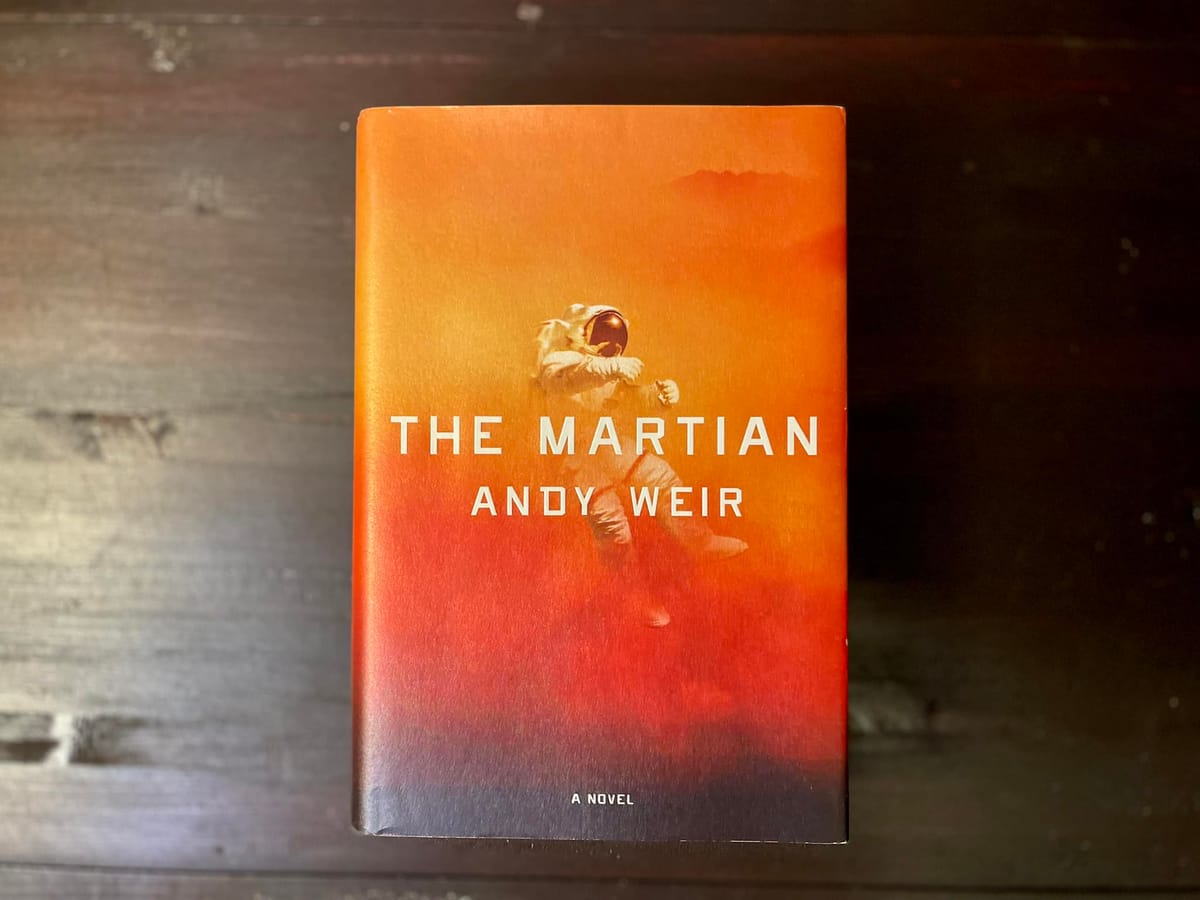Our First Glimpse of The Martian, and a Look Back at a Thrilling, Optimistic Sci-Fi Adventure

Star Wars: The Force Awakens aside, the sci-fi film we’re most ridiculously excited for this year is Ridley Scott’s The Martian, based on Andy Weir’s novel of the same name. You need not look any further than the cast to see why: Matt Damon, Kate Mara, Jessica Chastain, Sean Bean, Kristen Wiig, Donald Glover, Jeff Daniels, Chiwetel Ejiofor, and a whole bunch of other high-profile names crowd out the cast list. On top of that, the first trailer for the film has just been released, and it promises to be no less haunting and gorgeous journey to the Red Planet than we’d expect from Scott.
But it’s more than just the pretty pictures or the onscreen talent that have us shaking in our spacesuits in anticipation. It’s also based on one of the most interesting science fiction novels in years, and one that’s really taken the mainstream public by (sand) storm. The Martian follows Mark Watney, a cheery astronaut who comes to on Mars, only to discover he’s been left behind by his crew after a deadly sand storm threatened their mission of exploration. With his crew and everyone on Earth sure he’s dead, Watney has to figure out how to survive using only what he has with him, and even then, with no rescue coming, there’s no guarantee he’ll get off the planet alive.
The Martian is a modern day Robinson Crusoe-style novel of survival. It certainly isn’t new territory for science fiction, or even real life: look no further than the events of Apollo 13 and films such as Gravity, which pit their characters not against dastardly antagonists, but the cold, harsh environment of space. Watney is just the latest in a string of characters caught in a life-or-death scenario, and it’s difficult to root against him as he sciences his way out of his predicament (he has a more colorful way of putting it in the trailer: “In the face of overwhelming odds, I’m left with only one option: I’m gonna have to science the s*** out of this.”).
In recent years, Neal Stephenson, author Snow Crash and Seveneves, has lamented the decline of optimistic science fiction and what it has to offer. The Martian is a book that truly be described as optimistic—even as Watney’s air, food, and water supply trickles down to nothing. The central premise, that humanity can overcome even the harshest environment and toughest survival challenges with a little wit, intelligence, creativity, and fortitude, has captivated readers, and seems poised to do the same for the theatergoers who made Sandra Bullock’s very bad day in space into a huge hit.
In many ways, it is a celebration of humanity’s ingenuity and use of technology to do more than survive: it’s what allows us to stay warm at night, not to mention travel to the Moon and Mars. Science and technology provide not only the tools for Watney to make the trip, but the underlying infrastructure to support such a mission, and the resources to figure out how to save him, even from millions of miles away.
There’s much to be said about the pessimistic visions of science fiction that are out there; after all, technology has also played a major role in changing the planet’s climate, creating the atomic bomb, and developing the mass surveillance systems that make up some very depressing parts of our existence. But science fiction’s depressive mode isn’t the only one, and, as The Martian ably proves, people are hungry to see what good can come from the amazing things humanity has accomplished. We can only hope that the film will retain the same level of hope that’ll make us cheer on the characters on the screen. Based on Damon’s monologue that opens the trailer—”Every human being has a basic instinct to help each other out”—the book is in good hands.